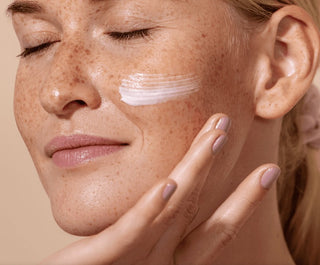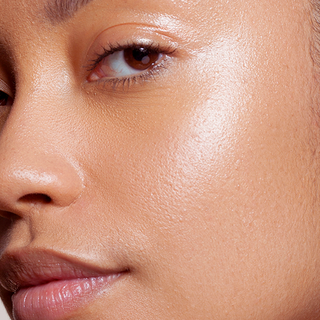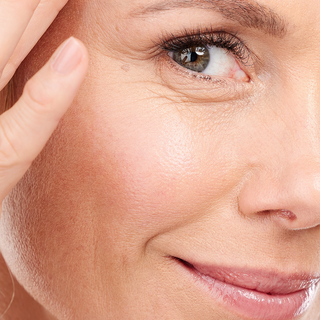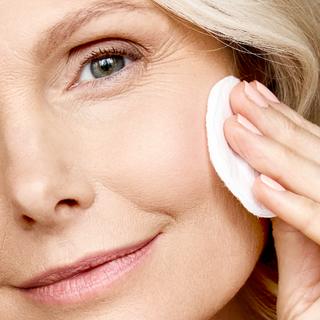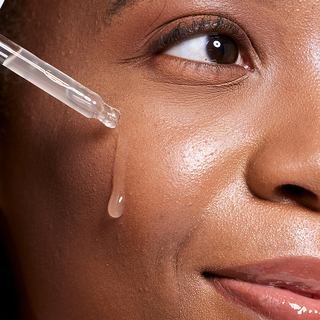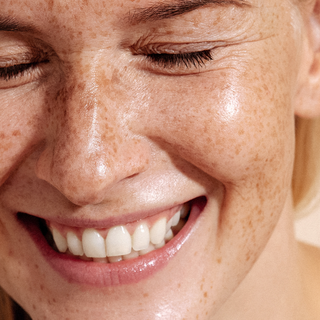Ever feel unsure about how much skincare product to use? With cabinets full of half-used jars and routines that never stop evolving, it’s easy to lose track.
Skincare should be straightforward and effective, not overwhelming.
This guide simplifies it all, showing you exactly how much to apply at each step, with adjustments based on skin type, texture, and personal goals. The result? Better absorption, less waste, and noticeable changes.
The Truth About How Much Skincare You Really Need
Using too much product doesn’t give you better skin, it just gives you more problems. Think clogged pores, sticky residue, wasted product, and irritated skin barriers.
On the flip side, using too little often means your skin isn’t getting enough of what it needs to actually change. The sweet spot? Applying just enough to let your skin drink it in, no more, no less.
Here’s where we get fired up: the skincare industry loves to push the “more is better” mentality, especially when it comes to actives. This mindset often backfires.
It leads to barrier damage, redness, and skin that constantly feels overwhelmed. You don’t need ten layers, you need the right amount of the right products, in the right order.
So, what does “just enough” look like? It means using enough to coat the skin evenly, nothing more. Your skincare should absorb, not sit on the surface.
Skin type matters, too. Dry skin may need a bit more moisture, while oily or sensitive skin can react negatively to heavy layering. If your face feels greasy, itchy, or congested, it’s a sign to scale back.
The key is layering correctly:
Cleanser → Toner → Eye Cream -> Serum → → Moisturizer → → Sunscreen.
Apply from thinnest to thickest so each product can do its job without getting blocked. You don’t need more steps, you need smarter ones.
Skincare, Simplified: How Much Product Is Actually Enough?
Let’s get into the specifics, because knowing the right amount of each product isn’t just about saving money, it’s about seeing real, measurable results.
When you apply the correct dose of each step in your skincare routine, you give your skin exactly what it needs to thrive
Cleanser
How much? A dime-sized amount or one pump.
How to use: Work it into damp skin for at least 60 seconds, yes, a full minute. This gives your cleanser time to loosen debris, break down oil, and clear away buildup.
Top concern: “Should I double cleanse?”
Yes! If you’re wearing makeup, SPF, or live in a city with high pollution, yes, start with a balm or oil cleanser, then follow with your regular one.
✔ Try:
-
Clarifying Cleanser – Our gel-based, niacinamide-infused cleanser is gentle enough for daily use, but potent enough to unclog and clarify.
Serum
How much? 2–3 drops or a small pea-size, depending on consistency.
Tip: Press the serum into your face instead of rubbing it in like you would for moisturizer.
Top concern: “Can I mix serums?”
Yes, but proceed with caution. Layering too many can dilute benefits or cause irritation. I usually recommend alternating days or combining no more than two compatible serums.
✔ Try:
-
Brightening CE Ferulic Serum – A clinical-grade vitamin C powerhouse that brightens, firms, and shields against damage with just a few drops.
-
Nourishing HA Peptide Serum – A deeply hydrating, skin-plumping serum that restores bounce and soothes dryness with hyaluronic acid and peptides.
Eye Cream
How much? A grain of rice sized amount , for both eyes.
How to apply: Tap gently with your ring finger around the orbital bone, never rub. This area is delicate and prone to stretching, so treat it with care.
Top concern: “I’m using eye cream, but I’m still puffy.”
Overuse is usually the culprit. Too much product here can lead to milia or puffiness. In this case, less truly is more.
✔ Try:
-
Dynamic Eye Renewal Cream – A targeted formula that firms, hydrates, and brightens with peptides and botanical extracts. It’s designed to work in small amounts and absorbs quickly without heaviness, perfect for morning and night.
Moisturizer
How much? 1-2 pumps or A nickel-sized dollop.
Application note: Make sure your serum has fully absorbed before applying moisturizer. Applying too soon can dilute your active ingredients.
Skin type tips:
-
Dry skin: May need a second layer, or a heavier cream.
-
Oily skin: Stick with lightweight moisturizers and mattifying agents.
✔ Try:
-
Barrier Replenishing Cream – Packed with ceramides and hyaluronic acid to lock in hydration without a greasy finish.
Sunscreen
How much? 1-2 pumps for your face,
Application tip: Always apply to dry skin, damp skin can cause uneven SPF layers.
Top concern: “How do I reapply over makeup?”
Use a lightweight SPF mist or compact powder sunscreen. I love our tinted SPF for mid-day top-ups that don’t mess with your makeup.
✔ Try:
-
Illuminating Beauty Balm SPF 44 – It’s hydrating, tinted, and gives you that healthy glow and broad-spectrum protection.
What Influences How Much Product You Need?
One of the questions I hear most often is: “Can I just follow a general rule for how much product to use?”
Not exactly. There’s no one-size-fits-all approach.
How much you need depends on a mix of personal factors, and getting those details right can be the difference between glowing, balanced skin and skin that feels overloaded. Let’s break it down:
Skin Type
Your skin’s natural tendencies should guide your product application, not a generic instruction on the back of a bottle.
Oily Skin
If your skin leans oily, resist the urge to layer on product after product. Lightweight formulas are your friend, and you often need less than you think.
Heavy creams or oils can sit on the skin, congest pores, and trigger more shine or breakouts. Stick to gel textures or emulsions, and don’t forget, less is still hydrating when your formula works hard for you.
Dry Skin
On the flip side, dry or dehydrated skin may crave more hydration and moisture-sealing power. In these cases, you might need a bit more moisturizer or opt for richer creams (called occlusives) to prevent transepidermal water loss.
Always listen to your skin: tightness, flaking, or rough texture means you’re likely not using enough, or not layering it right.
Sensitive Skin
For sensitive types, it's all about precision and restraint. Start with small amounts, especially when using actives like retinol, exfoliating acids, or vitamin C.
It’s better to use a product effectively twice a week than to overuse it and trigger inflammation.
Delivery Method
Not all containers are created equal, and how your product is dispensed can absolutely affect how much you apply.
-
Pumps: For most cleansers and moisturizers, one pump is just right. That said, always check the consistency, if it spreads easily, you probably don’t need more.
-
Droppers: I always recommend counting drops (not dropper fills). For most of our potent serums, 2–3 drops are enough to treat the entire face.
Fix These Sneaky Skincare Mistakes For Better Results
Skincare can be confusing, especially when your shelf is full and your skin isn’t responding the way you hoped. Let’s walk through some frequent concerns and how to get back on track.
What If I Underapply And Waste The Product’s Potential?
More doesn’t mean better. It means your skin can’t absorb what it’s given.
The solution is to focus on even, thin layers. Make sure your skin is properly prepped, lightly damp skin (post-toner or facial mist) can actually help serums and moisturizers spread further and absorb better. When applied correctly, even a few drops can do the heavy lifting.
Trust your skin to tell you when it’s had enough.
“I Hate Wasting Expensive Skincare, How Do I Balance Value And Results?”
I get it, medical-grade skincare can be a meaningful investment. That’s why I formulate Maria Kane products to be potent in small doses. You don't need to slather on layers for them to work.
Stick to the minimum effective dose, and let the formulation do the work.
If you’re using our Brightening CE Ferulic Serum, for example, 2–3 drops is all you need for antioxidant protection and brightening power. Using more won’t make it work faster, it’ll just make your bottle disappear quicker.
I Have Too Many Open Products, I Can’t Use Them Up In Time.
This happens all the time, especially when people bounce between brands or chase the latest launch.
The problem? Half-used bottles crowding your shelf, and confusion about what to apply, and when.
My advice? Choose 1–2 products per category, and rotate only as needed. Consider your skin’s condition and the season.
For instance, swap in a richer moisturizer during winter or switch to a lightweight SPF in summer, but resist opening three versions of the same thing. Not only will you simplify your routine, but your products will stay fresher, and you’ll actually finish what you start.
Sticky, Greasy Feeling, Is That Too Much Or Just The Product?
If your skin feels coated or doesn’t “settle” after a few minutes, you’ve likely either applied too much or layered incompatible products.
This is something I see often, layering too many actives or rich products without knowing how they work together.
The solution? Use less and give each step time to absorb. Let serums and targeted formulas sink in fully before applying moisturizer or sunscreen.
If your skin still feels off, the product itself may not suit your texture preferences or skin type, especially if you're oily or acne-prone. Try lighter-weight formulas like our, which hydrates without heaviness.
Don’t Let Product Waste Steal Your Glow
More isn’t more.
Overusing skincare doesn’t mean faster results, it often leads to irritation, clogged pores, or that frustrating feeling of “why isn’t this working?”
Your skin just needs the right amount, the right formula, and the right order, that’s what delivers real change.
And when every step is intentional, your routine becomes not just effective, but effortless.
The Maria Kane lineup is designed to be minimal but mighty, medical-grade, concentrated, and built to simplify your skincare, not complicate it.
You don’t need a shelf full of serums or a 12-step routine. You need staples that work smarter, so you can feel confident in your skin, every single day.
🔗 Explore our smart essentials that help you get more from less.

